Running shoes lacing tecniques
When most runners purchase their running shoes from a specialty running store they are already cross-laced and ready to go. Or are they? Did you know there are different ways that you can lace your shoes to make them more comfortable or to help customize your shoes for your feet? Here are some of the more common shoe lacing patterns that help combat some common shoe issues.
Loop lacing lock - This technique can be used in a number of different lacing patterns to insure a tight and snug fit anywhere along the eye row of your shoe, depending on where your laces seem to be slipping. In this example, I have put the loop lacing lock at the top of the shoe. The shoe was cross-laced as usual to the top of the shoe. To accomplish the loop lacing lock, put each lace end back into the same hole it just exited, leaving a small loop on each side. Then thread each loose end through the loop on the opposite side of the shoe. Pull tight to make loops smaller. Then tie shoe as usual.



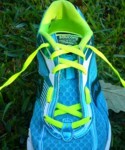 | Lacing technique to address a high instep - Near the toe of the shoe, start lacing with the cross-lacing technique. Once you get to the middle of the shoe, thread the laces up the sides of the eye row, leaving room. Continue cross-lacing at the top of the shoe and tie at the top as usual. This will give your foot room in the midfoot area and help keep the shoe from feeling to tight across the arch of the foot. |
 | Lacing technique to address a wide forefoot - From the bottom of the eye row, lace up the sides of the shoe. Once you get to the middle of the shoe (midfoot), start the cross-lacing technique and continue on to the top of the shoe. Tie shoe at the top, as usual. This will give your foot plenty of room to spread or allow your toes to splay while running. |
Lacing technique to address a narrow foot - To help a shoe fit more snugly on a narrow foot, you might want to try adding a loop lacing lock in the middle of the eye row. To accomplish this, cross-lace the shoe as normal up to the midfoot, add a loop lacing lock, and then continue cross-lacing the shoe to the top. Tie the shoe at the top, as usual. Doing this will double the amount of laces across your midfoot, ensuring a snug fit.
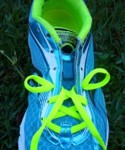
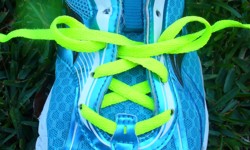

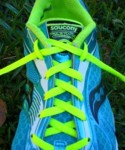 | Lacing technique to address heel slipping - There are two good ways of keeping a shoe from slipping on the heel. The first way is to put a loop lacing lock at the top of the shoe and tie shoe as usual. Another way is to use a modified loop lacing lock, called a "runner's tie". To accomplish the runner's tie, cross-lace the shoe until the second to last top hole and then lace up each side of the eye row. Take each loose lace end and thread it back under the side lace of the opposite side. Tie the shoe at the top, as usual. |
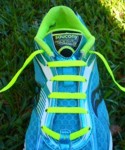 | Lacing technique for when the shoe feels too tight - To give your shoe an overall roomier feel, try the parallel lacing technique. This lacing technique is a little tricky. To start, lace the first tow eyelets near the toe of the shoe. On one side, pull the lace up through the first eyelet and then straight across the shoe and into the eyelet directly across from it. On the other side, skip the first eyelet and pull the lace up through the second eyelet and then lace it into the eyelet straight across from it. Repeat this skipping an eyelet and lacing across pattern until the shoe is laced to the top. |
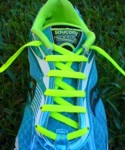 | Lacing technique to prevent black toenails - To accomplish this threading technique, start by threading one end of the shoe lace through the eyelet at the top of the shoe on the opposite side of your big toe. Leave enough lace length to tie the shoe. Lace the rest of the shoe lace through the eyelet closest to your big toe, creating a diagonal lace down the length of the shoe. Lace this long length of shoe lace straight across toward the outside of the shoe and then diagonally up toward the inside of the shoe. Repeat this lacing pattern until the shoe is laced to the top. Tie the shoe, as usual. Lacing the shoe this way allows the material above your big toe to be pulled up and off of the nail when the outside lace is tugged and tied tightly. |
These are just a few alternative lacing techniques that may help solve some common runner's shoe fit issues.
Credits - WorldwideRunning.com would like to thank the website Katie Runs This for the authorization to reprint the article "Running Shoe Lacing Techniques" by Katie Key.

